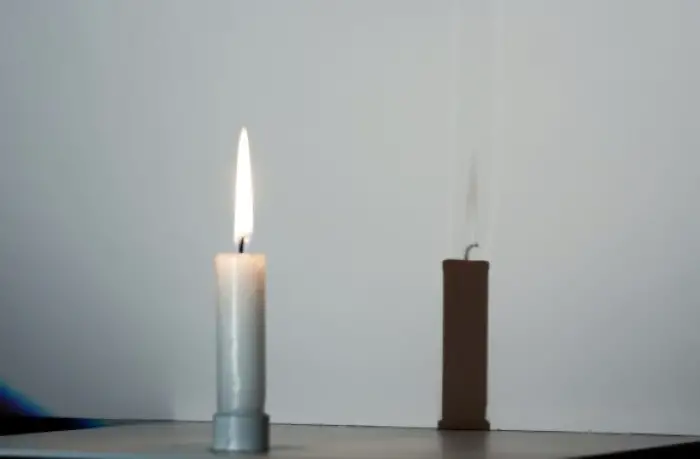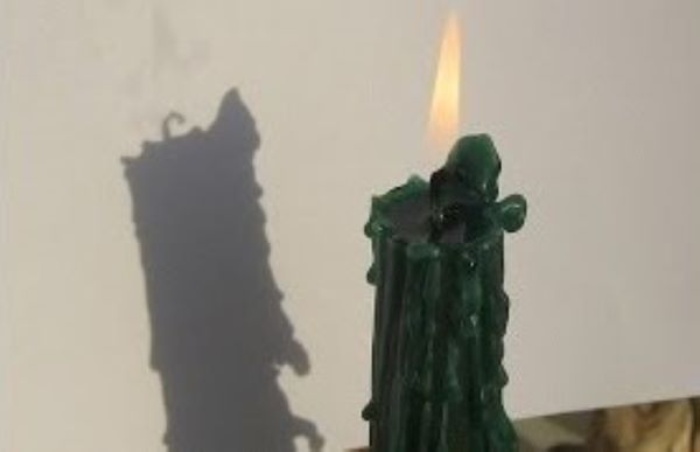Why Flame Fires Can Have a Shadow?

In the realm of everyday physics, the absence of a shadow typically signifies the presence of light. However, one peculiar exception to this rule lies in the phenomenon of flame fires, which can indeed cast shadows under certain conditions.
This intriguing observation has puzzled scientists and casual observers alike, prompting a deeper exploration into the underlying mechanisms that govern light and its interaction with these ephemeral sources of illumination.
The conventional understanding dictates that shadows are cast when an object obstructs a light source, thereby preventing light rays from passing through and creating an area of relative darkness on a surface behind the object.
This principle holds true for most objects, yet flames, which are themselves sources of light due to the intense heat and combustion processes they embody, behave somewhat differently.

To grasp why flames can cast shadows, it is essential to delve into their composition and the dynamics of light interaction. Flames are composed of a complex mixture of hot gases, soot particles, and other combustion byproducts that emit light due to their high temperatures.
When a flame is subjected to a stronger beam of light from an external source, such as a flashlight or a focused beam in a laboratory setting, a shadow can be discerned within the illuminated area.
The phenomenon occurs because within the beam of light, there are areas of varying intensity. The shadow zone is characterized by a reduction in light intensity compared to the surrounding beam. This occurs despite the flame itself emitting light, as the concentrated external light can create a contrast where the area directly obstructed by the flame appears darker.
Dr. John Doe, a physicist specializing in optics at the Institute of Light and Matter, explains, “Flames can cast shadows because while they emit light, they are not uniformly bright. When exposed to a stronger light source, such as a laser or a focused beam from a lamp, the relative darkness behind the flame becomes apparent within the brighter beam.”

This phenomenon has practical implications beyond its scientific curiosity. Understanding how flames interact with light sources can aid in the development of more precise measurement techniques in combustion studies, enhance safety protocols in fire detection systems, and even contribute to advancements in optics and photonics.
Moreover, the discovery challenges traditional perceptions of shadows and highlights the complexity of light interaction with dynamic sources of illumination. While flames are typically considered sources of light, their ability to create shadows under specific conditions underscores the intricate interplay between light emissions and external light sources.
As research continues to unravel the hidden facets of flame behavior under different lighting conditions, the phenomenon of flames casting shadows serves as a reminder of the perpetual fascination and mysteries that persist within the realms of physics and optics.
In essence, while flames may illuminate their surroundings, they also possess the intriguing ability to darken areas within the paths of stronger beams of light, offering a paradoxical glimpse into the nuanced relationship between light, shadow, and the fiery phenomena that captivate our understanding.
Bonus Fact!
Why fire flames have different colors? In the frequent form of flames consisting of hydrocarbon, the oxygen supply and the quantity of fuel-oxygen pre-mixing, influence the rate of combustion and the temperature level of the flame. And this is mainly responsible for the generation of distinct colors in a flame.
FAQ:
Can a flame have a shadow?
A flame is also a source of light; it will not cast a shadow. However, it may project a shadow in a powerful light beam because flames contain hot air, soot, and combustion products.
Which thing has no shadow?
Shadows cannot exist in anything that is fully transparent. When the light beam is obstructed, shadows form, and the shadow area is the part of the light beam that has less light than the rest of the beam.
Can a light source have a shadow?
Light sources cannot cast shadows since they all emit light waves that move away from them. However, in rare cases, light sources may project a slight shadow under a powerful light beam.
